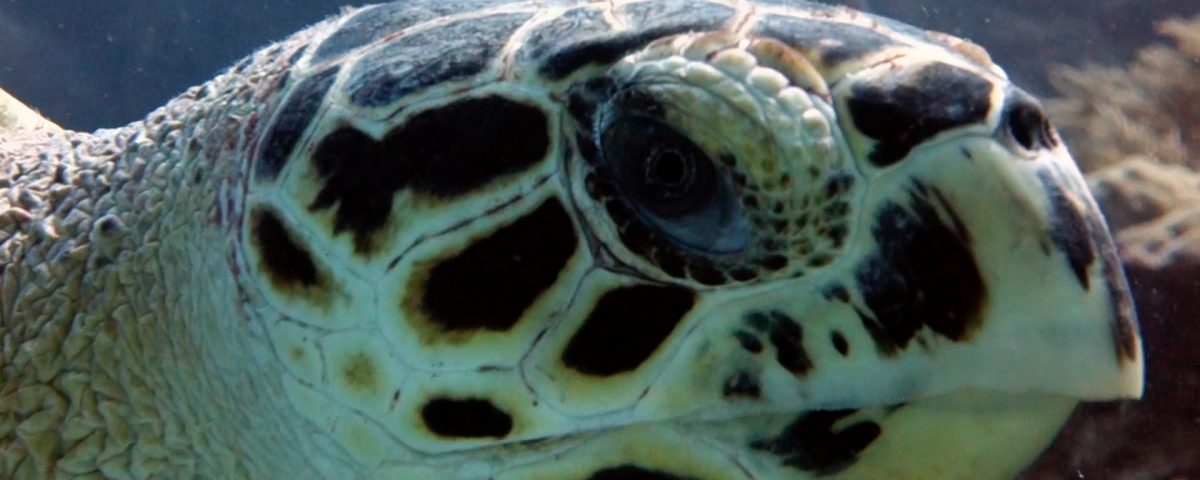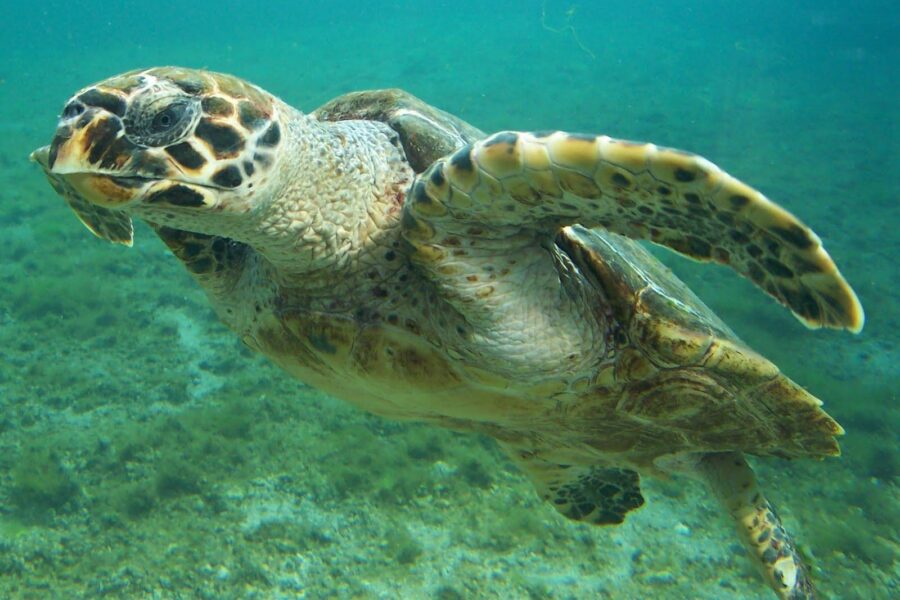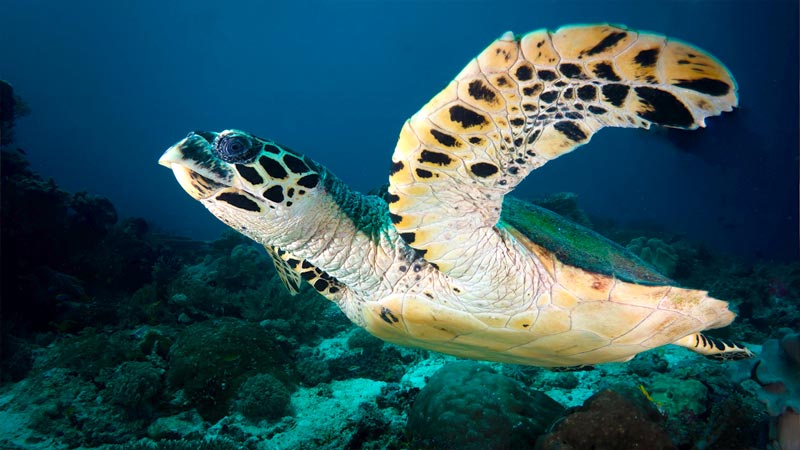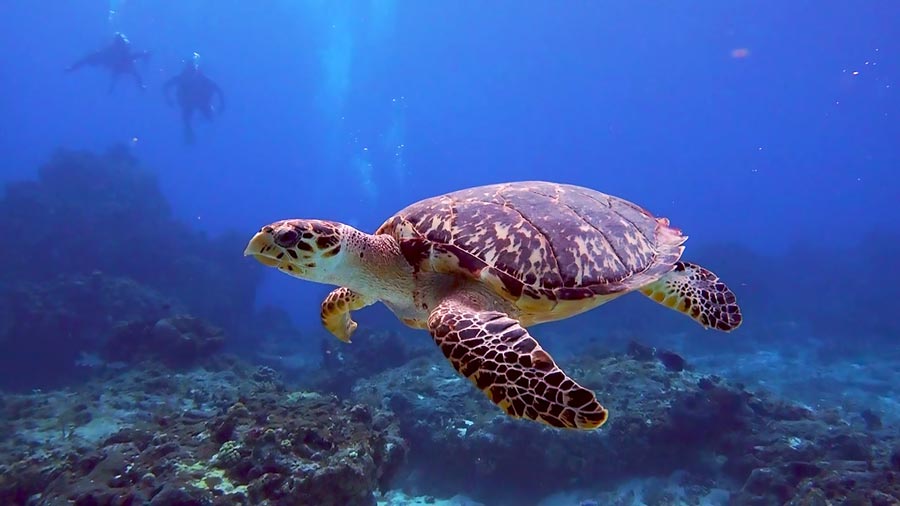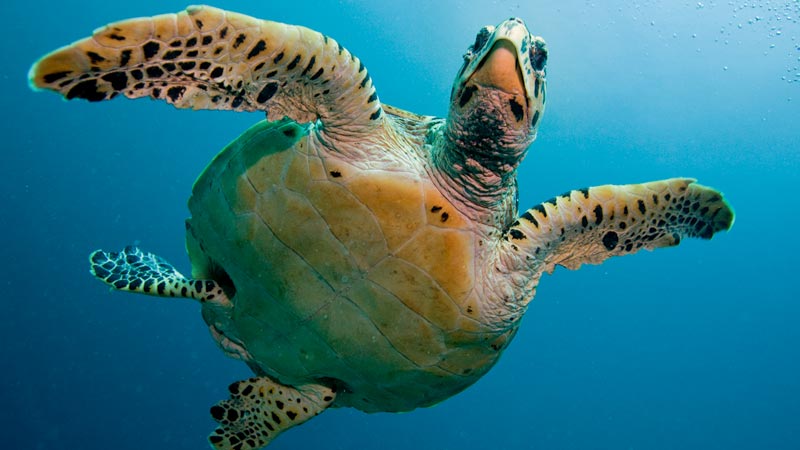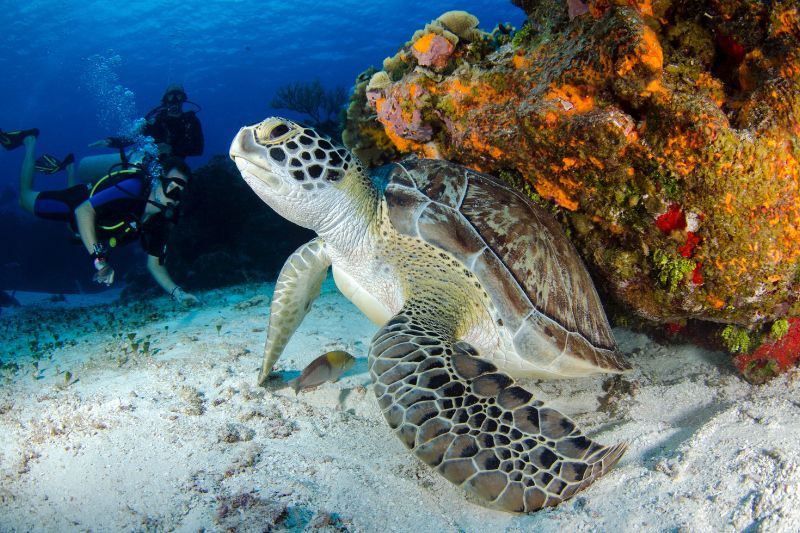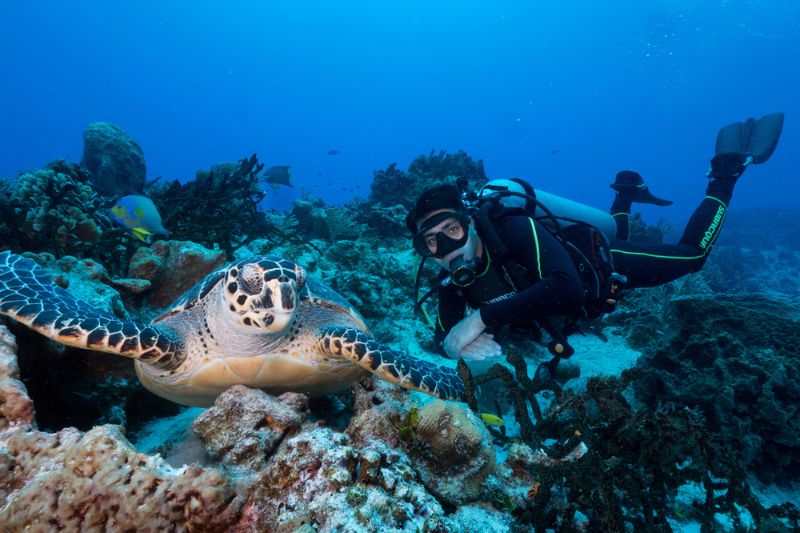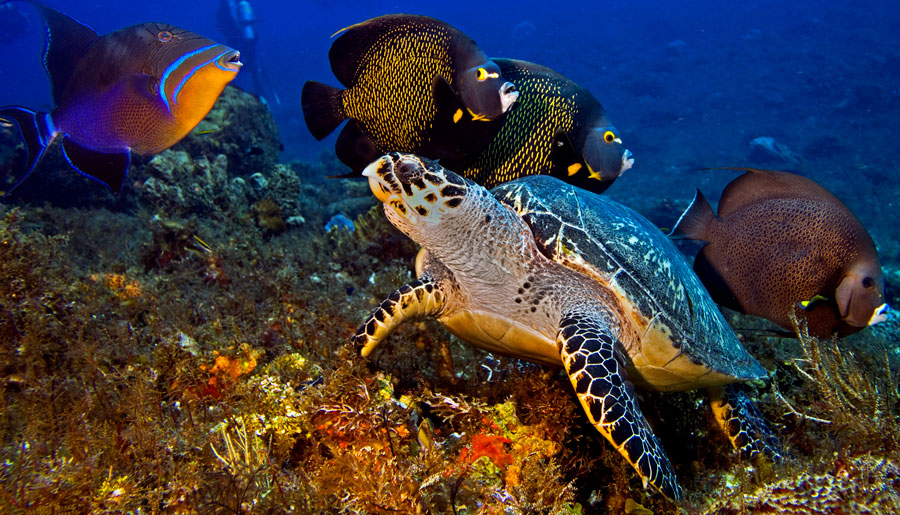Behavior Hawksbill Turtle Fun Facts
Hawksbill turtles are fascinating and unique creatures in the marine world. Here are some hawksbill turtle facts that you might not know.
7. What Do Hawksbill Sea Turtles Eat?
Hawksbill turtles primarily feed on sponges, making them the only known spongivorous reptiles. Because of this, their flesh is harmful to humans, as sponges contain toxic compounds that accumulate in the turtle’s tissues, potentially causing serious illnesses.
However, hawksbill sea turtles don’t just eat sponges—they also consume mollusks, marine algae, red lobsters, crustaceans, sea urchins, fish, and jellyfish. They are omnivores, which allows them to adapt their diet based on the available food in their habitat.
The food they eat varies depending on where they live. Additionally, the diet of hawksbill sea turtles changes throughout their lives. For example, hatchlings live in the open ocean and hide in floating algae, feeding on crustaceans, bryozoans, tunicates, and annelids.
8. The Importance of Hawksbill Turtles for Coral Reefs
Hawksbill turtles are essential for the health of coral reefs. These sea turtles feed on sponges that can otherwise overwhelm and damage the coral. By keeping sponge populations in check, hawksbill turtles help maintain the delicate balance of the ecosystem. This makes them a crucial species for preserving the biodiversity of marine environments.
9. Hawksbill Turtle Migration
One of the most interesting facts about the hawksbill sea turtle is its migratory behavior.
Hawksbill turtles are migratory animals, traveling thousands of kilometers from distant habitats. In the Pacific, the longest recorded migration for a hawksbill turtle was 2000 km (1300 miles), traveling between Australia and the Solomon Islands.
In the Atlantic, one hawksbill sea turtle swam 3000 km (1900 miles) between Mexico and the Dominican Republic.
As for their migration, hawksbill turtles have a fascinating pattern. After nesting on tropical beaches, they head to deeper ocean zones, leaving us with many hawksbill sea turtle habitat facts still to be discovered. Although their migratory route is long and challenging, it remains one of the most impressive wonders of nature, continuing to attract both biologists and tourists alike.
10. Hawksbill Sea Turtle Reproduction
They Lay Hundreds of Eggs at a Time
The hawksbill turtle has fascinating reproduction habits. Female hawksbill sea turtles typically lay between 140 and 200 eggs per nest, and they may nest three to eight times each season. The nesting season varies by region: in the Atlantic, it’s from April to August, while in the Pacific, it’s from May to October. During this time, female hawksbill turtles leave the water and dig nests in the sand to lay their eggs.
Did you know that the temperature of the sand affects the sex of the hawksbill turtle hatchlings? If the temperature is around 29°C (84.2°F), there’s an equal ratio of male and female hatchlings. However, if the temperature rises, more females are born, and if it drops, more males are produced.
Hawksbill Hatchlings Face Extreme Odds
Only 1 in 1,000 hawksbill turtle hatchlings survive to adulthood. Their early life is filled with challenges, from hungry predators to ocean currents that carry them far from shore.




